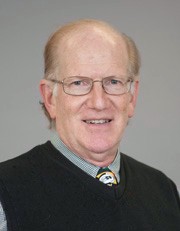Radiological Assessment & Measurement Lab
The University of Cincinnati Graduate Health Physics Program in Nuclear and Radiological Engineering has state-of-the-art laboratories for radiation detection and measurement, a unique capability for direct (in vivo) and indirect (in vitro) measurement of internally deposited radioactive materials, and for radioanalysis of biological and environmental samples.
Resources available in these laboratories are used by graduate students and faculty for thesis research and externally funded research grants and contracts. Routine and special measurements are conducted to evaluate persons who may be at risk of internal exposure to radioactive materials. All facilities are available in the event of a radiological emergency.
The In Vivo Radiation Measurement Laboratory is located at the UC Center Hill Research Facility (5997 Center Hill Avenue). Diagnostic measurements are performed to evaluate persons who may have inhaled or ingested radioactive materials arising from occupational or environmental exposure, accidents, or incidents of radiological malfeasance. Detectors measure radiation emitted from radioactive material deposited in the body. There are two large examination rooms, each with at least one array of detectors for performing direct, in vivo measurements. Each room has thick steel walls to reduce interferences from natural background radiation. The lab also has a reception area and a change room with a shower where a person can change into surgical scrubs before the examination.
Measurements of persons having a potential for inhalation or ingestion of radioactive materials are performed by placing detectors over the chest while the person sits comfortably in a chair for approximately 30 minutes. The room is also equipped with a television and radio for the comfort of the person being examined.
The lab is also used to test anthropometric structures designed and fabricated at UC. These structures (i.e., phantoms) are used to calibrate direct in vivo measurements of uranium and transuranic radionuclides that may be deposited in the lungs, liver, and skeleton. Calibration phantoms have also been developed for measuring radioactive materials in wounds and lymph nodes. These phantoms are used at many national and governmental laboratories around the world including the International Atomic Energy Agency. The UC In Vivo Radiation Measurement Laboratory is the only research facility of its kind in the United States that is dedicated solely for education and research. The University of Cincinnati broad scope radioactive materials license permits use of all forms of radioactive materials, including uranium, plutonium, and other transuranic radionuclides. Thus, the UC In Vivo Radiation Measurement Lab is able to perform measurements for any of these radionuclides in response to accidents and incidents of radiological malfeasance
Location
In Vivo Radiation Measurement Laboratory
5997 Center Hill Avenue
Cincinnati, OH 45224
Phone: 513-641-2763
The UC Nuclear Radiochemistry Laboratory and the Laboratories for Environmental Radiological Assessment and Measurement are located on the UC campus. These labs include resources to perform high sensitivity alpha and gamma spectrometry, beta proportional and liquid scintillation counting to analyze any type of radioactive material including uranium, thorium, plutonium, and other special nuclear materials. The radiochemistry laboratory has developed high sensitivity radiochemical methods for analysis of natural radioactivity in a variety of biological and environmental samples using neutron activation analysis. Natural and artificial matrix standards are also designed and prepared using radioactive materials with traceability to the National Institute for Standards and Technology.
Indirect measurement of internally deposited radioactive material is accomplished by radiochemical analysis of samples collected from persons who may have been exposed to a radioactive substance. Samples typically consist of excreta (urine or feces), hair, tissue, or other biological tissue. Measurements of environmental contamination are also performed using samples of soil, vegetation, air, or air filters to determine the content of natural, industrial, or technologically enhanced radioactive material. The laboratory has eighty alpha spectrometers, seven high resolution gamma spectrometers, and ample facilities for radiochemical analysis and measurement of nearly any number and type of samples. Procedures are available for high sensitivity, isotopic analysis of plutonium, uranium, and thorium as well as gross alpha, gross beta and fission product measurements. Isotopic gamma spectrometry can also be performed in combination with specific radiochemical separations for nuclear forensics analyses to reveal the age of an intercepted nuclear material.
Our principle mission at the University of Cincinnati Nuclear and Radiological Engineering Program is to train students to become professional nuclear or radiological engineers, health physicists, or industrial safety professionals. The U. S. Departments of Energy and Homeland Security have supported our academic research program in Nuclear Forensics, which trains graduate students from engineering, chemistry and physics to pursue professional positions in nuclear forensics within the national laboratory system. Our facilities include state-of-the-art instruments accommodate research activities conducted by students and faculty
Location
Center for Radiological Assessment and Measurement
501 Old Chemistry
University of Cincinnati (West campus)
Cincinnati, OH 45221
Phone: 513-556-2052
Faculty
